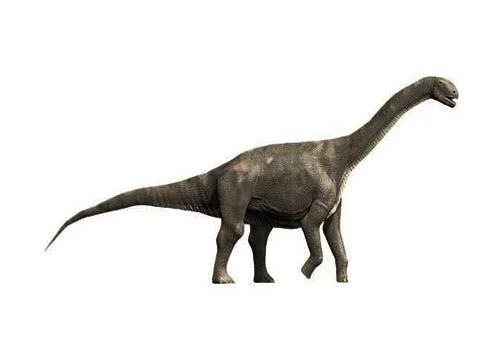Jobaria (Jobar - after a creature in African mythology)

Jo-ba-re-ah
P.C. Sereno., A.L. Beck, D.B. Dutheil, H.C.E. Larsson, G.H. Lyon, B. Moussa, R.W. Sadleir, C.A. Sidor, D.J. Varricchio, G.P. Wilson & J.A. Wilson - 1999
Herbivore
Estimated 18 meters long
Sauropod
J. tiguidensis (type)
Niger, Abaka - Tiouraren Formation
Early Cretaceous, 135 million years ago
Jobaria Facts
Jobaria is a genus of herbivorous dinosaur that lived during the Early Cretaceous period, around 135 million years ago. It was named after the creature “Jobar” from African mythology, which is said to be a giant beast that resembles a serpent or a dragon. The name Jobaria was chosen in reference to the dinosaur’s large size.
Jobaria was a sauropod, a type of dinosaur that was characterized by its long neck and tail, and massive body. Jobaria was among the largest sauropods of its time, measuring up to 18 meters (59 feet) in length and weighing around 22,000 kilograms (24 short tons; 22 long tons).
One of the most distinctive features of Jobaria was its elongated neck, which was up to 9 meters (30 feet) long. This made it one of the longest-necked sauropods known to science. In addition to its long neck, Jobaria also had a relatively short and stocky body, which may have allowed it to support its massive weight and move efficiently on land.
Jobaria was discovered in the Sahara Desert in Niger, Africa, in the mid-1990s. Its fossils were found in a rock formation known as the Elrhaz Formation, which is known for its rich deposits of dinosaur fossils from the Early Cretaceous period.
The discovery of Jobaria has helped paleontologists better understand the diversity of sauropods that lived during the Early Cretaceous period. It also sheds light on the evolution and biology of these massive creatures, which were some of the largest animals to ever walk the Earth.
Despite its impressive size, Jobaria was likely preyed upon by large carnivorous dinosaurs, such as the theropod Afrovenator, which also lived in the same region during the Early Cretaceous period. Jobaria is one of the most well-known and studied dinosaurs from Africa, and continues to be the subject of ongoing research and study.



